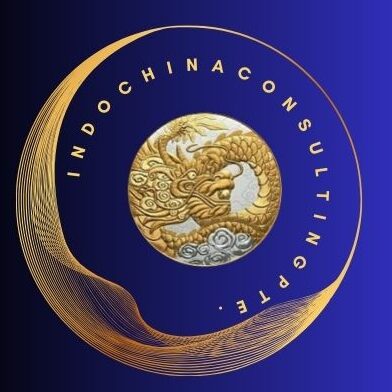You’ve got a brilliant idea, a burning passion, and maybe a little bit of seed money. Now, the challenge is to turn that vision into a reality with limited resources. This is where the bootstrap approach comes in – building a successful business with minimal external funding.
The Pain Point: You’re facing financial constraints and need to find creative ways to manage your cash flow and achieve your goals.
The Solution: Embrace the bootstrap mentality and focus on building a lean, efficient business that maximizes revenue while minimizing expenses.
While you consider ways to minimise costs, you should also look at creative ways to improve/increase revenue. I wrote a blog on that subject which you can read here.
How to Bootstrap #1: Minimize Startup Costs – Lean Startup Principles
The lean startup methodology emphasizes building and launching products with minimal viable investment.
The Pain Point: You’re tempted to overspend on unnecessary expenses during the early stages of your startup.
The Solution: Identify and eliminate non-essential costs. Focus on building a minimum viable product (MVP) to test your assumptions and gather customer feedback.
Example: Instead of building a full-fledged e-commerce platform, start with a simple landing page and social media presence to test your product-market fit.
Keyword: Lean Startup. Embrace the lean startup methodology to minimize startup costs.
How to Bootstrap #2: Focus on Generating Revenue Quickly – Prioritize Sales and Marketing
Cash flow is king, especially in the early stages of a startup.
The Pain Point: You’re spending too much time on non-revenue-generating activities.
The Solution: Prioritize sales and marketing efforts that generate immediate revenue. Focus on building a strong online presence, leveraging social media, and implementing effective customer acquisition strategies.
Example: Offer free trials, freemium models, or early-bird discounts to attract customers and generate early revenue.
Keyword: Revenue Generation. Prioritize activities that bring in revenue from day one.
How to Bootstrap #3: Negotiate Favorable Terms with Vendors and Suppliers
Every dollar counts when you’re bootstrapping.
The Pain Point: You’re paying full price for goods and services.
The Solution: Negotiate favorable terms with vendors and suppliers. Look for discounts, extended payment terms, or volume pricing.
Story Time: I once worked with a startup that negotiated a deal with their office space provider, trading marketing services in exchange for reduced rent. This creative approach helped them save significant costs.
Power Word: Negotiation. Leverage your negotiating skills to secure favorable deals.
How to Bootstrap #4: Utilize Free or Low-Cost Tools and Resources
There are countless free and low-cost resources available to help you build your business.
The Pain Point: You’re spending money on expensive software and tools when free alternatives exist.
The Solution: Explore free and open-source software options, utilize free online resources, and leverage the power of social media.
Resource: Tools like Canva, Google Workspace, and Hubspot offer free plans or free versions of their software.
Fact: Many successful startups have been built using free or low-cost tools and resources.
Keyword: Free Resources. Leverage free and low-cost tools to minimize your expenses.
How to Bootstrap #5: Reinvest Profits Wisely
Every dollar you earn is precious in the early stages of a startup.
The Pain Point: You’re not reinvesting your profits wisely back into the business.
The Solution: Reinvest your profits strategically to fuel growth. This could involve investing in marketing, expanding your team, or improving your product or service.
Example: If you experience a surge in sales, use a portion of those profits to invest in paid advertising to reach a wider audience.
Keyword: Reinvestment. Reinvest your profits wisely to fuel future growth.
Call to Action: The bootstrap journey may be challenging, but it’s incredibly rewarding. By embracing a lean approach, focusing on revenue generation, and utilizing available resources, you can build a successful business on your own terms. So, buckle up, get creative, and watch your startup soar!
Key Takeaways
- Embrace the lean startup methodology and minimize unnecessary expenses.
- Prioritize revenue generation and focus on activities that bring in cash.
- Negotiate favorable terms with vendors and suppliers.
- Leverage free and low-cost tools and resources.
- Reinvest your profits wisely to fuel future growth.
Frequently Asked Questions
- How can I identify and eliminate non-essential expenses?
- Conduct a thorough review of your expenses and identify areas where you can cut back.
- Use budgeting tools to track your spending and identify areas of overspending.
- What are some effective strategies for generating early revenue?
- Offer free trials, freemium models, or early-bird discounts.
- Leverage social media and content marketing to attract customers.
- Build a strong email list and nurture leads.
- Where can I find free or low-cost business tools?
- Explore platforms like Google Workspace, Canva, and Hubspot.
- Search for free or open-source software options online.
- How do I know when it’s time to seek external funding?
- If you’ve exhausted all your internal resources and require significant capital for expansion.
- What are the benefits of bootstrapping?
- Greater control over your business, reduced financial risk, and increased resilience.
By embracing the bootstrap approach and focusing on building a lean, efficient business, you can increase your chances of success and achieve your entrepreneurial dreams.
If you’d like, I can help you brainstorm some specific ideas on how to bootstrap your own business! Just let me know.
